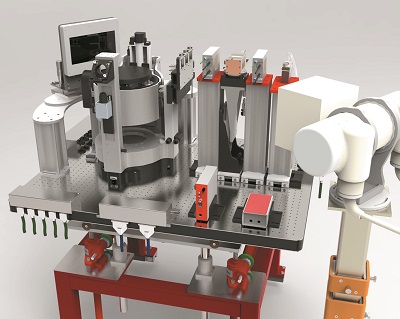Preclinical radiotherapy at the Australian Synchrotron Imaging and Medical Beamline
 Therapeutic
applications of synchrotron X-rays such as microbeam (MRT) and minibeam (MBRT)
radiation therapy promise significant advantages over conventional clinical
techniques for some diseases if successfully transferred to clinical practice. Preclinical
studies show clear evidence that a number of normal tissues in animal models
display a tolerance to much higher doses from MRT compared with conventional
radiotherapy. However, a wide spread in the parameters studied makes it
difficult to come to any conclusions about the associated tumor control or
normal tissue complication probabilities. To facilitate more systematic and
reproducible preclinical synchrotron radiotherapy studies, a dedicated
preclinical station including small-animal irradiation stage was designed and
installed at the Imaging and Medical Beamine (IMBL) at the Australian
Synchrotron [Livingstone et al. (2017).
J. Synchrotron Rad. 24, 854-865].
Therapeutic
applications of synchrotron X-rays such as microbeam (MRT) and minibeam (MBRT)
radiation therapy promise significant advantages over conventional clinical
techniques for some diseases if successfully transferred to clinical practice. Preclinical
studies show clear evidence that a number of normal tissues in animal models
display a tolerance to much higher doses from MRT compared with conventional
radiotherapy. However, a wide spread in the parameters studied makes it
difficult to come to any conclusions about the associated tumor control or
normal tissue complication probabilities. To facilitate more systematic and
reproducible preclinical synchrotron radiotherapy studies, a dedicated
preclinical station including small-animal irradiation stage was designed and
installed at the Imaging and Medical Beamine (IMBL) at the Australian
Synchrotron [Livingstone et al. (2017).
J. Synchrotron Rad. 24, 854-865].
The stage was characterised in terms of the accuracy and reliability of the vertical scanning speed, as this is the key variable in dose delivery. The measured speed was found to be within 1% of the nominal speed for the range of speeds measured by an interferometer. Furthermore, dose measurements confirmed the expected relationship between speed and dose and showed that the measured dose is independent of the scan direction.
These and further studies covered in the paper demonstrate that the IMBL preclinical synchrotron radiotherapy irradiation stage can provide unique opportunities for reproducible radiobiology studies in small animals to answer fundamental questions on biological pathways in high-dose-rate synchrotron radiotherapy. The tool also represents a unique opportunity to set the medical physics codes of practice for spatially fractionated submillimetric beams, such as dosimetry protocols, treatment planning benchmarking platform, patient safety procedures and patient safety systems.

